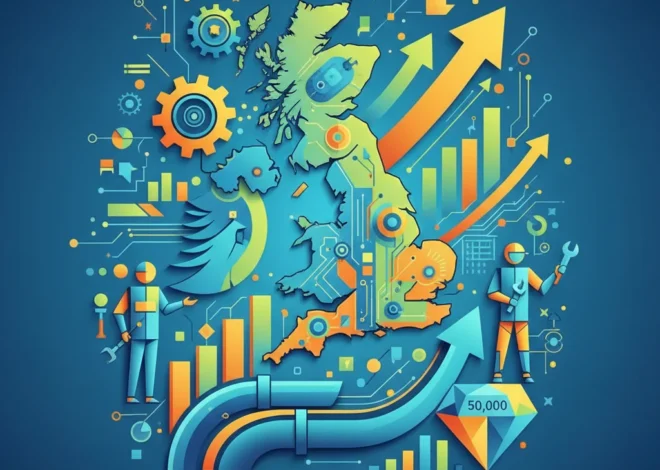
The State Strikes Back: Why the Nexperia Takeover Signals a New Era for Global Investing
A Tectonic Shift in Global Economics
In the quiet corridors of global finance and corporate boardrooms, a seismic shift is underway. The decades-long consensus championing free markets, globalization, and minimal state interference is cracking. A recent letter to the Financial Times by Riku Hellgren from Helsinki, titled “Dutch takeover of Nexperia is augur of things to come,” crystallized this new reality. The potential move by the Dutch government to acquire semiconductor firm Nexperia, currently owned by China’s Wingtech, is far more than a single corporate transaction. It is a powerful signal—a canary in the coal mine—indicating a fundamental realignment of the global economic order. For investors, business leaders, and anyone involved in international finance, understanding this paradigm shift is no longer optional; it is essential for survival and success.
We are moving from an era where economic efficiency was the primary driver to one where national security, supply chain resilience, and technological sovereignty are paramount. This has profound implications for the stock market, foreign direct investment (FDI), and the very principles of modern economics. The Nexperia case is a perfect microcosm of this larger geopolitical drama, revealing the intricate dance between technology, finance, and state power.
The Nexperia Saga: A Chip at the Center of a Geopolitical Storm
To grasp the significance of this moment, we must first understand Nexperia’s unique position. Headquartered in the Netherlands, Nexperia is not a manufacturer of cutting-edge processors like those from Nvidia or Intel. Instead, it is a global leader in essential semiconductors—diodes, transistors, and logic devices. These are the foundational components, the workhorses of the electronics industry, found in everything from cars and smartphones to industrial machinery and defense systems. While not as glamorous as advanced AI chips, they are utterly indispensable to the modern economy.
Nexperia’s ownership history is a story of globalization in reverse. Originally part of Dutch giant Philips, it was spun off into NXP Semiconductors, which was later acquired by a consortium of private equity firms. In 2017, it was sold to a collection of Chinese investors, eventually being fully absorbed by the Shanghai-listed Wingtech Technology in 2019. At the time, this was seen as a standard global business transaction. Today, it is viewed through a national security lens.
The Dutch government’s concern is twofold. First, there is the risk of intellectual property and sensitive technology being transferred to China, a strategic competitor. Second, and perhaps more importantly, is the issue of supply chain control. The COVID-19 pandemic and subsequent chip shortages laid bare the vulnerabilities of long, complex supply chains. As one analysis points out, the pandemic revealed “how dependent the EU and the US are on a handful of Asian countries for their chip supply” (source). For a country like the Netherlands, which is home to the single most critical company in the entire semiconductor ecosystem, ASML, ensuring control over related domestic assets like Nexperia is now seen as a matter of strategic urgency.
The potential Dutch government takeover, possibly through a state-backed investment fund, represents a dramatic escalation. It moves beyond simply blocking foreign acquisitions to actively reclaiming assets deemed critical. This isn’t just protectionism; it’s a proactive industrial strategy fueled by geopolitical anxiety.
Truce on a Knife's Edge: Decoding the Economic Tremors of the Gaza Ceasefire for Global Investors
The Return of Industrial Policy: Why Governments are Re-entering the Market
The Nexperia situation is not happening in a vacuum. It is a direct consequence of a broader, global trend: the resurgence of state-led industrial policy. For decades, the dominant economic philosophy, particularly in the West, was that governments should create a stable environment for business but otherwise stay out of the way. The market, it was believed, was the most efficient allocator of capital and resources.
This belief is now being aggressively challenged. The primary catalyst is the escalating technological and economic competition between the United States and China. Governments worldwide have woken up to the fact that certain industries are too important to be left to the whims of the market, especially when state-backed actors are competing on the other side.
We see this trend manifesting in several key policy initiatives:
- The U.S. CHIPS and Science Act: A landmark $280 billion bill designed to boost domestic semiconductor research, development, and manufacturing. The White House fact sheet explicitly states its goal is to “strengthen supply chains and counter China.”
- The European Chips Act: A similar €43 billion plan from the EU aimed at doubling the bloc’s share of the global semiconductor market to 20% by 2030.
- Enhanced FDI Screening: Nations across the developed world, from Germany to Canada and Australia, have significantly tightened their rules for screening foreign direct investment, giving governments more power to block takeovers in sensitive sectors.
This new paradigm redefines the relationship between the state and the market. It’s a move towards “geoeconomics,” where the tools of economics—like trade, investment, and financial technology—are used to achieve geopolitical goals. In this world, the nationality of a company’s owner matters, the location of its factories is a strategic consideration, and the security of its supply chain can outweigh the efficiency of its production.
Navigating the New Investment Landscape: A Guide for the Perplexed
For those engaged in finance, trading, and investing, this new reality requires a fundamental shift in mindset. The rules of the game are being rewritten in real-time. Strategies that worked flawlessly for the past 30 years may now be dangerously obsolete. The focus must shift from pure financial analysis to a more holistic, socio-political approach to risk management.
The core of this shift can be understood by comparing the old paradigm with the new one. The following table illustrates the key differences in the operating assumptions for the global economy.
| Factor | Old Paradigm (c. 1990-2020) | New Paradigm (c. 2020 onwards) |
|---|---|---|
| Primary Goal | Economic Efficiency & Profit Maximization | National Security & Supply Chain Resilience |
| Role of Government | Minimalist; a referee for the market | Activist; a strategic player and investor |
| Globalization | Hyper-globalization; borderless capital flows | Selective globalization (“Friend-shoring,” de-risking) |
| Key Risk Factor | Market & Credit Risk | Geopolitical & Regulatory Risk |
| Supply Chains | Just-in-Time, globally optimized for cost | Just-in-Case, redundant and regionalized |
| Technology | Seen as a neutral tool for productivity | Viewed as a strategic asset in a great-power contest |
So, what are the actionable takeaways for business leaders and investors?
- Re-evaluate Political Risk: Country risk analysis must go beyond simple economic stability. It now needs to include the likelihood of expropriation, forced divestment, export controls, and sanctions. This applies not just to traditional emerging markets but increasingly to developed nations as well.
- Map Your Supply Chain: Businesses must have a granular understanding of their entire supply chain, down to the tier-2 and tier-3 suppliers. A dependency on a single component from a geopolitically contentious region is a massive liability. Diversification is no longer about cost; it’s about survival.
- Look for “National Champions”: In an era of industrial policy, governments will be actively supporting and funding companies in strategic sectors (semiconductors, AI, green energy, biotech). Identifying these potential “national champions” early could present significant investment opportunities on the stock market.
- Consider the Role of New Financial Technology: As the global financial system potentially fragments along geopolitical lines, the role of fintech and even blockchain technology could become more prominent. Decentralized ledgers for supply chain verification or alternative payment systems could see increased interest as companies and countries seek to insulate themselves from financial chokepoints controlled by rivals. The traditional banking system may face new challenges in this fragmented world.
The Road Ahead: A More Complex and Fragmented World
The Dutch government’s potential move on Nexperia is more than just a headline; it’s a chapter in a much larger story about the changing nature of the global economy. The era of uncomplicated globalization is over. We are entering a more complex, contested, and fragmented world where the logic of politics often overrides the logic of economics.
This does not mean the end of international trade or investment. But it does mean that the calculus has changed. The intersection of finance, technology, and state power is now the most critical nexus to watch. The investors, traders, and business leaders who successfully navigate this new terrain will be those who understand that a company’s balance sheet is only as strong as the geopolitical landscape in which it operates. The Nexperia saga is a warning and an opportunity—a clear sign that the old maps of the global economy no longer apply, and it’s time to start drawing new ones.
The 0 Trillion Silent Pandemic: A Financial Blueprint to Avert Global Economic Collapse


